Function Machines Worksheets
Find the Missing Functions
Year groups: 7, 8
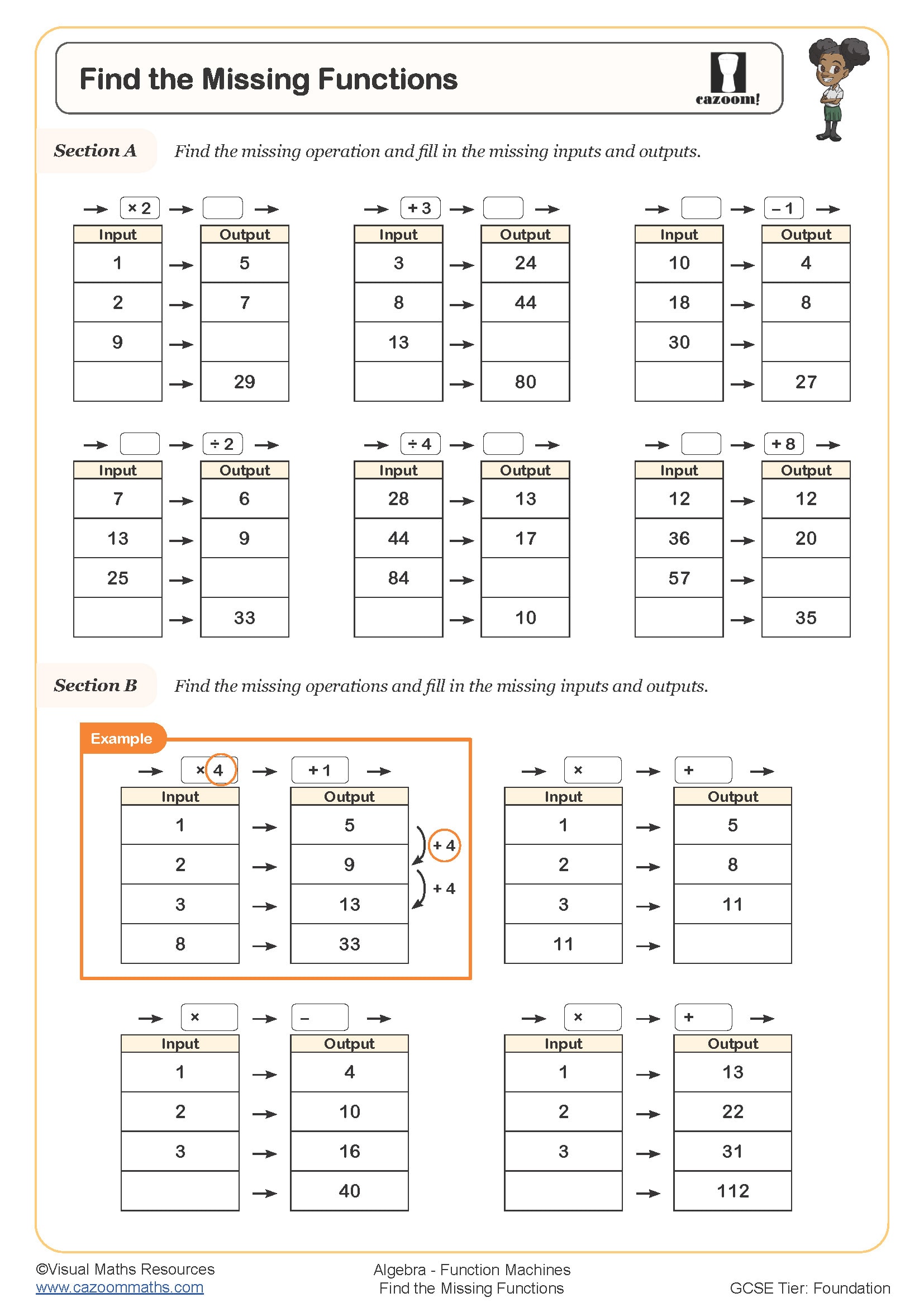
Forming Expressions from Function Machines
Year groups: 7, 8, 9
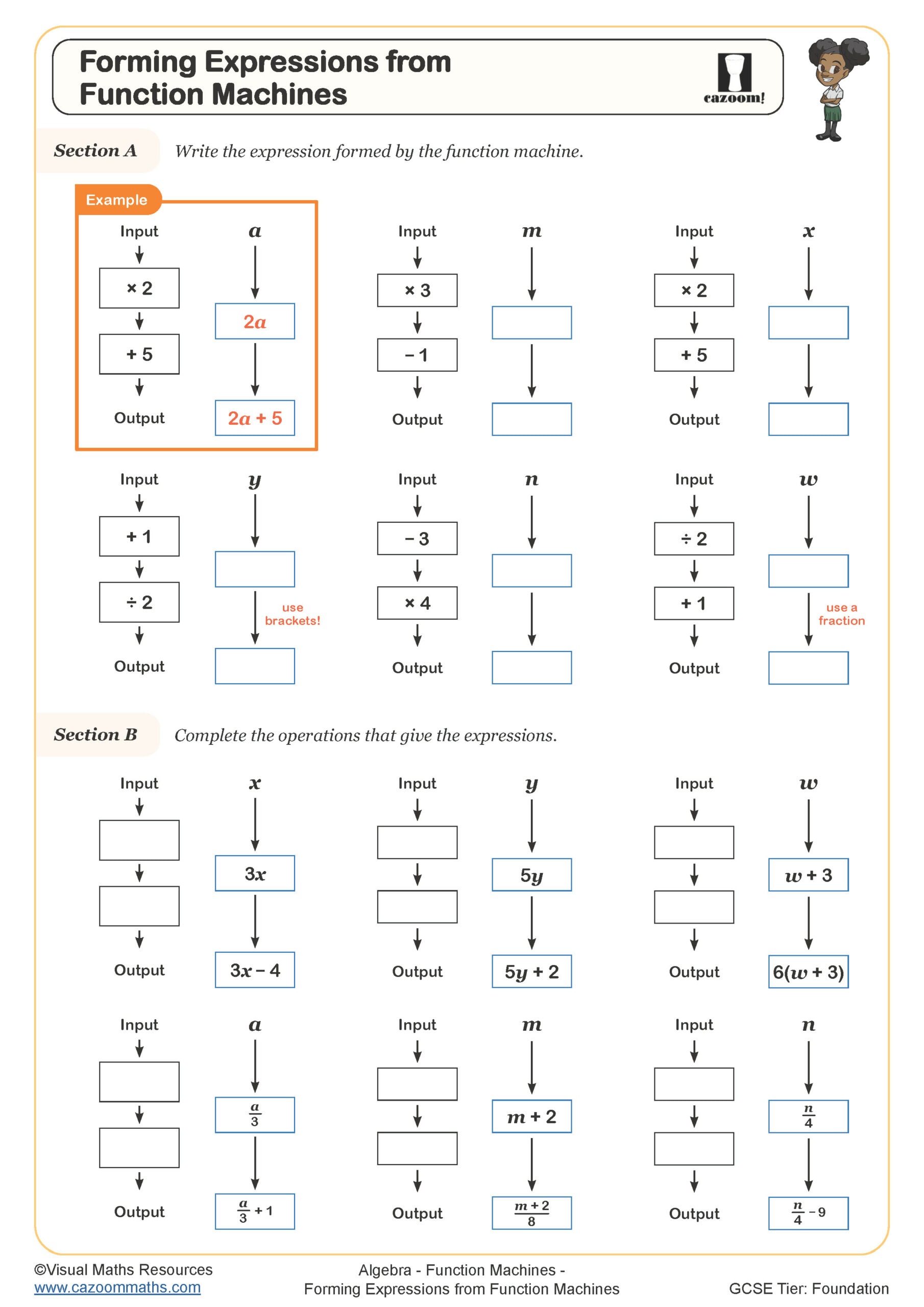
Inputs and Outputs
Year groups: 7, 8
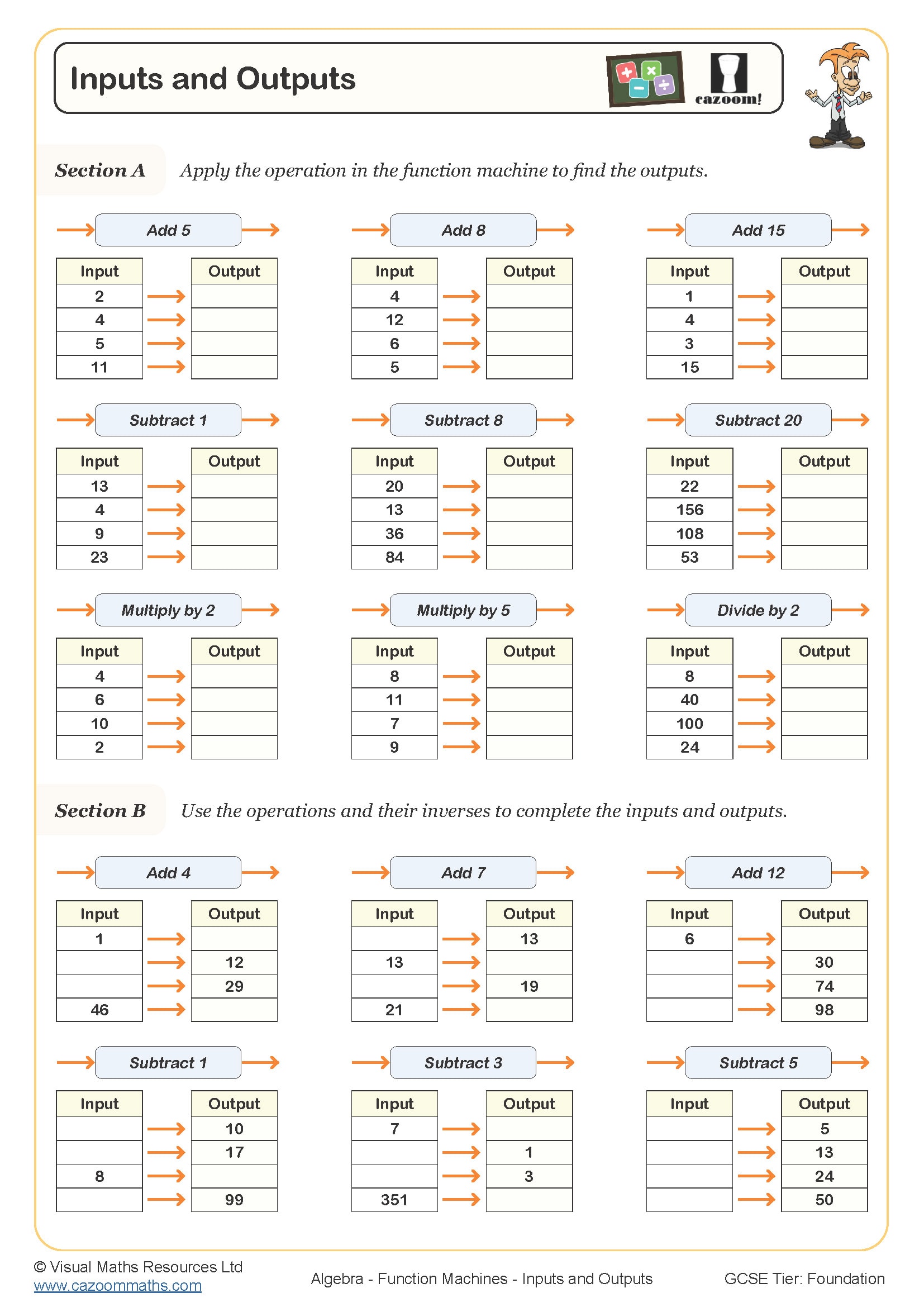
Inputs and Outputs - Two Step Function Machines
Year groups: 7, 8
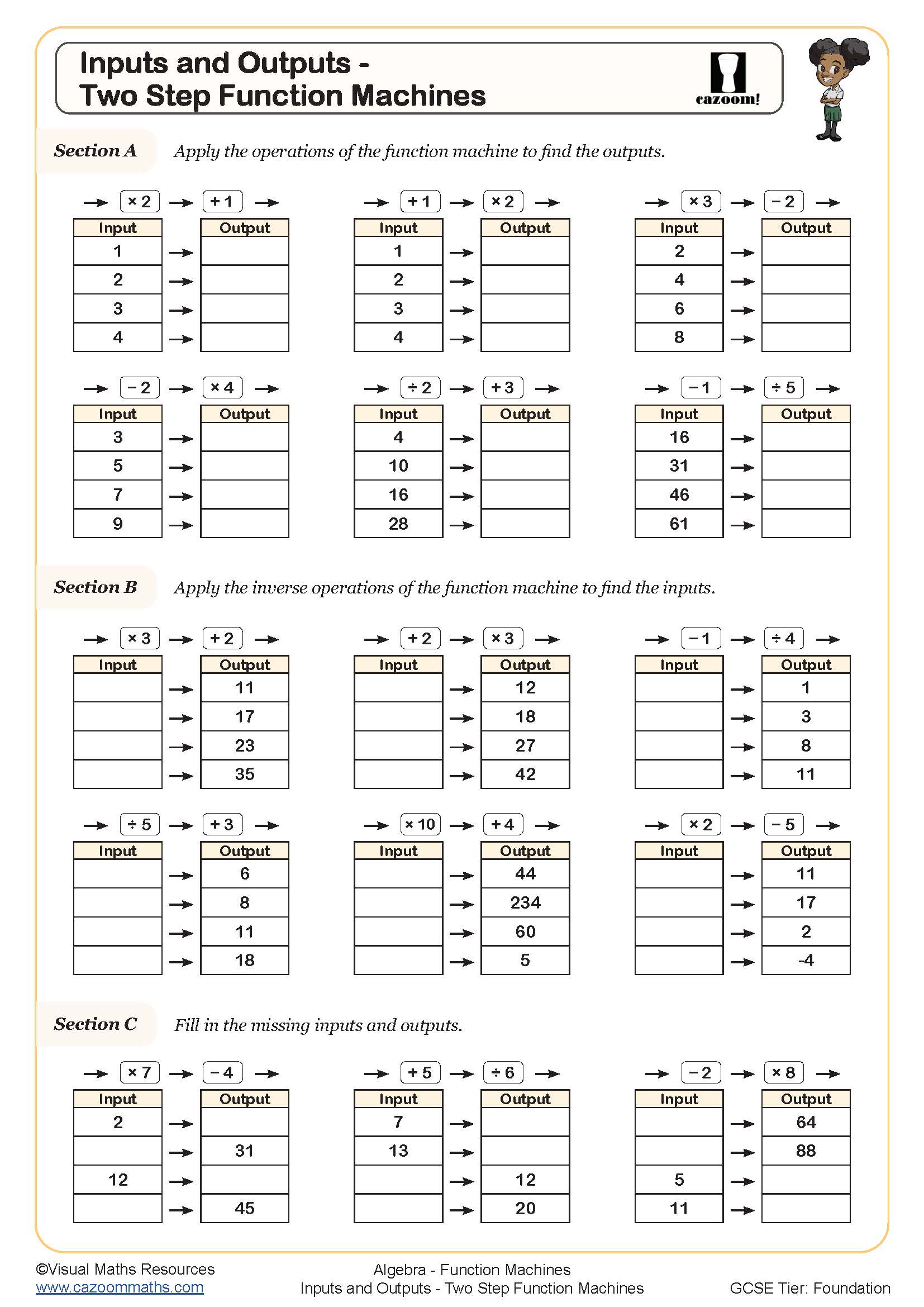
Rearranging Formulae with Function Machines
Year groups: 9, 10
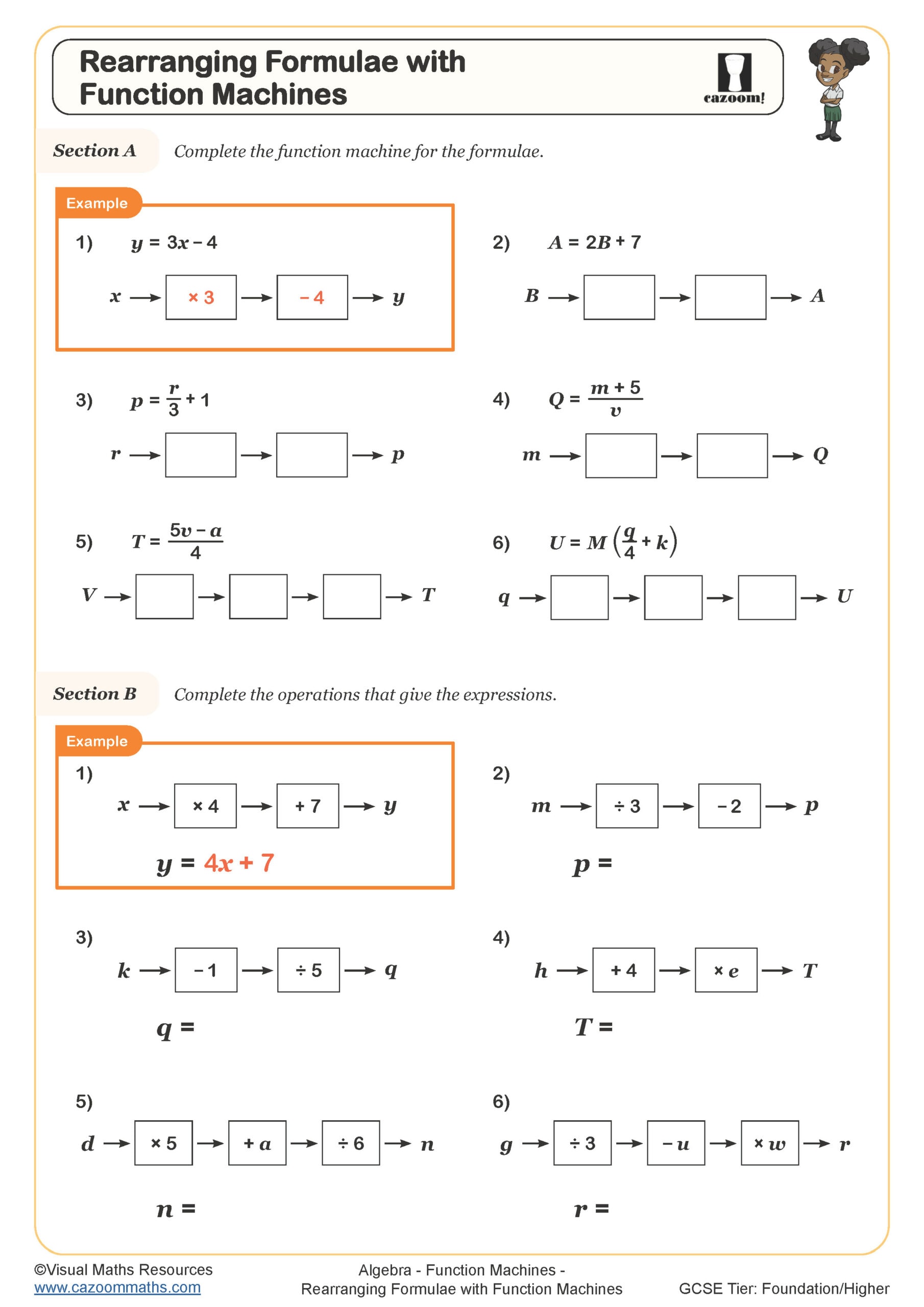
Finding Inverse Functions - Using Function Machines
Year groups: 10, 11
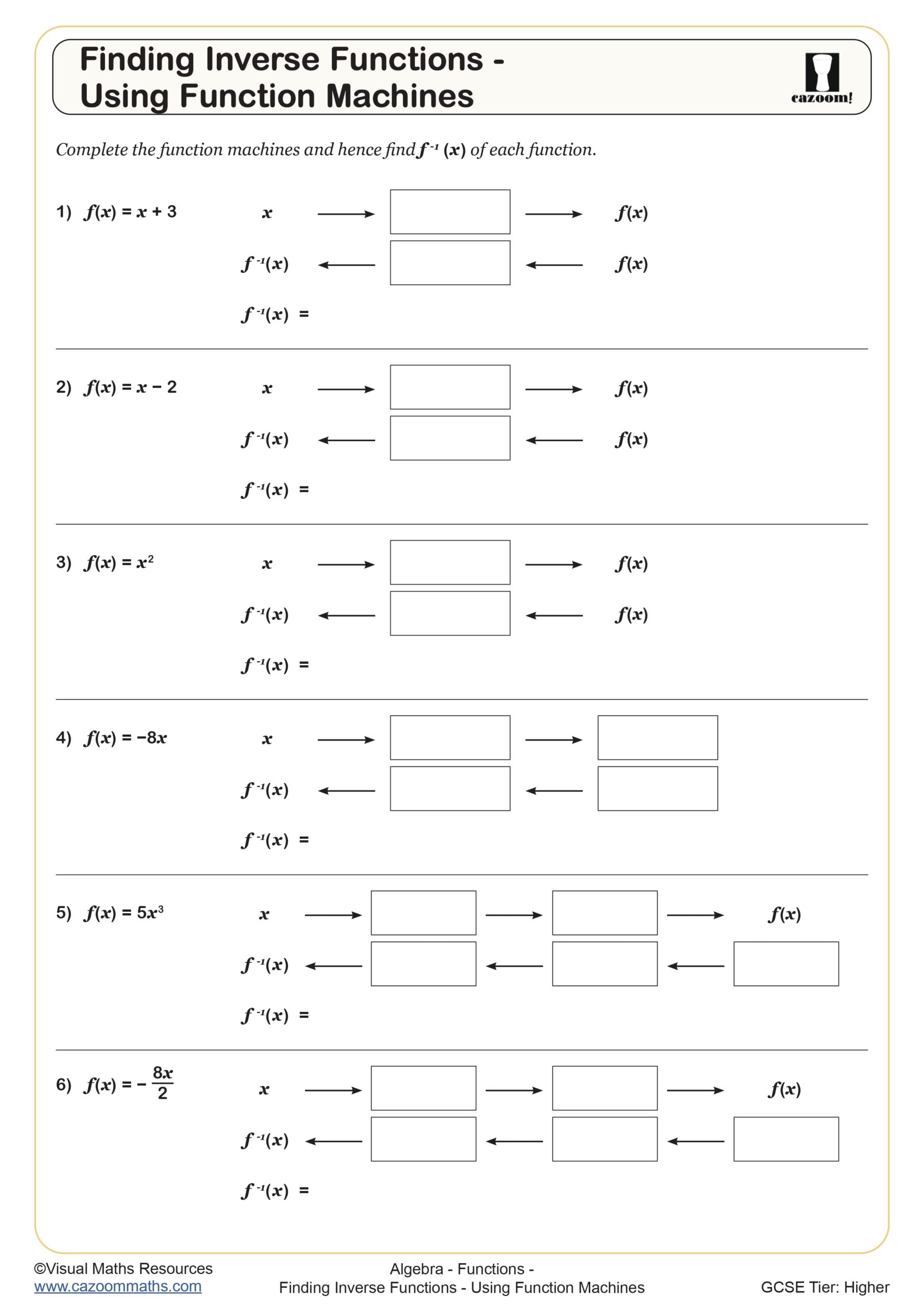
Introducing Functions - Using Function Machines
Year groups: 10, 11
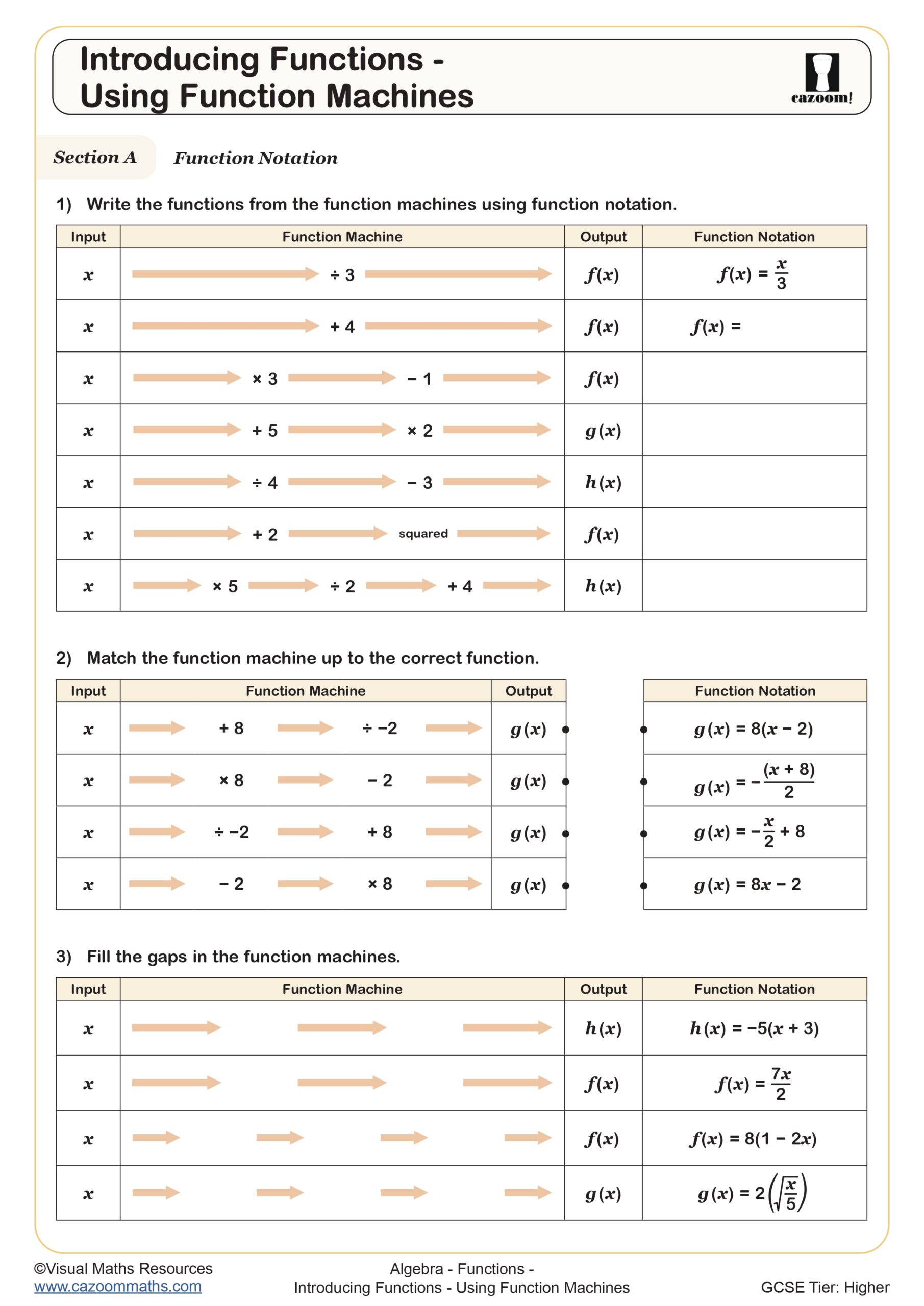
What Are Function Machines?
Function machines are diagrams that help students understand functions and solve them for correct answers.
As the name implies, they’re set up to represent machines that take inputs, apply rules and deliver output in the form of correct answers. When students complete a function machines worksheet, their task will be to determine the input, the output, or the operation taking place inside.
The Power of the Function Machine Metaphor
The technical definition of a function can be hard for students to understand. That’s why teachers often present it as a metaphor. This metaphor allows functions to be viewed like objects, or inputs, that enter the machine to be turned into different objects, or outputs.
The power of the function machine metaphor comes from its versatility. It can be used to explain or clarify different concepts involving functions, including the domain, the codomain, the range, the unique pairing, the parameters, the composition and the inverse.
Once students get the hang of using a function machine, filling in missing digits is easy. They’ll also learn how to create a function machine and how to use function machines for creating equations. For now, though, let’s take a closer look at the metaphor.
How Is a Function Like a Machine?
A function is like a machine in that the input, or domain, can be loaded into the machine, which represents an operation, and if it’s in good operational condition and has the same parameters, it will always produce the same outputs. Inverse functions can be understood as a product of running the function machine backwards.
How to Find a Function From a Table?
Students can find a one-step function from a table by evaluating the input and output variables. Find out if the function is increasing or decreasing by analyzing the operations. If there are addition or multiplication operations between the variables, the function is increasing. If there are subtraction or division operations between the variables, the function is decreasing.
How to Determine if a Graph is a Function?
Students can figure out whether a graph is a function by using what’s known as a vertical line test. Because a function can only have one output for each input, students only need to analyze the curve of the graph’s line. If the graph’s vertical line intersects a curve more than once, it does not represent a function.
The best way to use the vertical line test is to use a ruler to draw a line parallel to the y-axis. If that line only intersects the graph once, no matter where it’s placed, it is a graph of a function. If the vertical line intersects the curve more than once, it is not a function.
The History of Functions
There is some debate about when the concept of functions was developed, but most scholars use it as a distinguishing feature of “modern” mathematics. Scholar W. L. Schaaf goes even further, saying that: “The keynote of Western culture is the function concept, a notion not even remotely hinted at by any earlier culture.” Students can thus understand the need to learn how to find functions and how to use functions machines not only as a practical necessity but also as a means of celebrating Western culture and modern mathematics.
Download a Function Machine Worksheet From Cazoom Maths
The best way for parents and tutors to help young scholars with a function machine project is to help them work through examples. Download a function machine worksheet pdf from Cazoom Maths or find a function machine template and teach the student how to use it. Over time, the concept of functions will be solidified in the student’s mind and he or she will find the entire process to be quite straightforward.